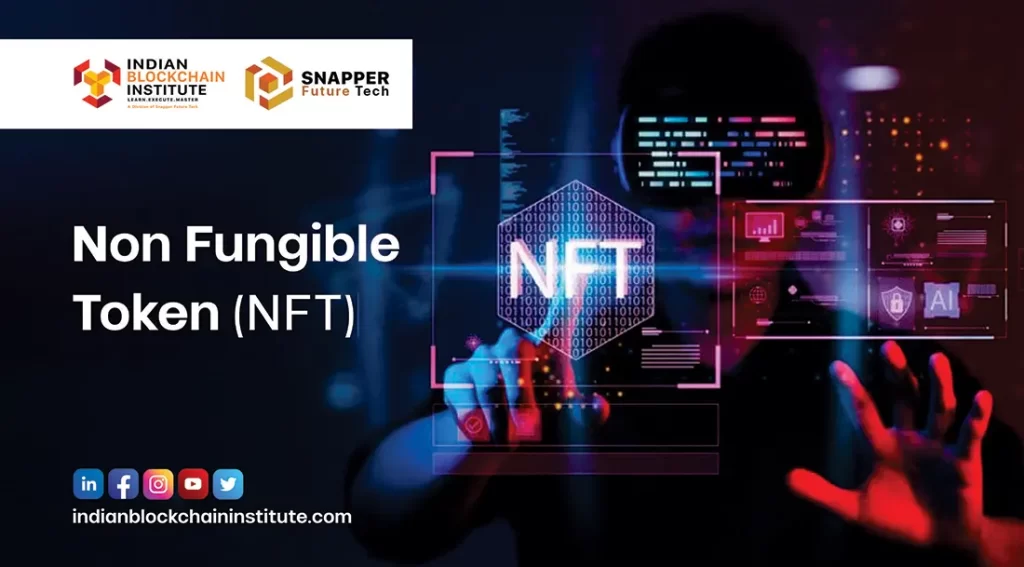Introduction
A non-fungible token (NFT) is a proprietary blockchain-based programmable digital item that publicly proves ownership of digital assets, such as digital art or music, or physical assets that are tokenized, such as houses, cars, or documents. Most NFTs today are unique ERC 721 tokens that live on Ethereum but are also supported by other blockchain platforms. NFTs store data and logic and are usually linked to off-chain records for storage purposes.
What are NFTs used for?
NFT and blockchain technology gives artists and content producers a special chance to monetize their works. For example, artists no longer have to sell their works through galleries or auction houses. Instead, the artist can sell it as an NFT directly to the consumer, allowing them to keep a larger portion of the sales revenue. Additionally, artists can hardcode royalties into their software so that every time their work is sold to a new buyer, they receive a percentage of the transaction. Since artists usually don’t get more income after the first sale, this is a desirable feature.
Making money with NFTs is not limited to art. To raise money for charity, companies like Taco Bell and Charmin have auctioned off NFT-themed artwork. With the highest bids at 1.5 Wrapped Ether (WETH) or $3,723.83 at the time of writing, Taco Bell’s NFT art sold out within minutes after Charmin named it “NFTP” (non-fungible toilet paper).
A 2011 GIF of a cat with a pop-tart body, Nyan Cat, sold for around $600,000 in February, while Top Shot NBA reached more than $500 million by the end of March. A single LeBron James NFT clip has sold for over $200,000.
Salman Khan, Amitabh Bachchan, Lindsay Lohan, and Snoop Dogg are just some of the celebrities who have jumped on the NFT bandwagon and released special memories, artwork, and moments as securitized NFTs.
Popular NFT marketplace
Currently, the largest NFT marketplaces are:
OpenSea.io
A self-described “supplier of rare digital items and collectibles” on this peer-to-peer platform. To start browsing NFT collections, just create an account. To find new artists, you can also sort works by how many people have bought them.
Rarible
Rarible is a democratic, open platform that allows artists and creators to issue and sell NFTs, much to the Open Sea. Holders of RARI tokens issued on the platform can comment on aspects such as fees and community rules.
Foundation
Here, in order for artists to upload their artwork, they must first receive “votes” or invitations from other creators. The community can showcase higher caliber artwork due to its exclusivity and high entry barrier (artists also have to pay “gas” to mint NFTs). Chris Torres, the developer of Nyan Cat, for example, sold NFTs on the Foundation platform. Additionally, this could lead to higher prices, which would not necessarily be a negative for artists and collectors looking to profit, assuming the demand for NFTs stays the same or even increases over time.
Although these platforms and others are hosts to thousands of NFT creators and collectors, make sure you do your research before buying. Some artists have fallen victim to copycats who have displayed and sold their work without their permission.
In addition, different platforms have different verification procedures for NFT creators and records; some are stricter than others. For example, NFT, Open Sea and Reible listings do not require owner verification. When purchasing NFTs, it may be wise to remember the adage “caveat emptor” (let the buyer beware), as consumer guarantees appear to be minimal at best. (3)
Real NFT (Non-Fungible Token) Use Case
Digital art
Knowing that digital files are easy to copy, an artist can create an NFT that represents a work of art, providing sufficient proof to the consumer that the NFT-based art file is the best currently available. The immutability of the blockchain allows the digital record to have this level of rarity and uniqueness. Additionally, because royalties can be built into the NFT smart contract, providing a percentage of sales back to the original artist, NFTs allow artists to receive a cut of secondary sales of their virtual artwork. Several celebrities, including Snoop Dogg, Lindsay Lohan, and John Cleese, were early adopters of digital art sales.
Playing
Players can gain an unheard-of type of ownership by using NFTs to issue non-replicable game items. In order to enjoy play-to-earn games and get exclusive game items, players often need to purchase items with cryptocurrencies. Depending on the demand, they can later evaluate these products and offer them for sale to other players. Players often contribute and vote on game development because their financial investment in the game increases the overall value of the game.
Fashion and luxury goods
Reality exists in digital fashion. Luxury fashion designers are stepping into the exclusive realm of NFTs and cryptocurrencies, even though conventional fashion is significantly more beneficial to society. NFTs empower premium brands to deliver invaluable, one-of-a-kind experiences to clients, boosting brand recognition, engagement, and revenue. NFTs are primarily used by fashion companies to communicate with Generation Z, the next wave of consumers. Burberry and Louis Vuitton were among the first companies to enter the NFT gaming market, proving that the digital expansion of the fashion industry can grow indefinitely.
Music and entertainment
NFTs enable meaningful interactions between fans and artists, allow fans to demonstrate their commitment, and ensure that artists can provide distinctive experiences such as private live broadcasts or exclusive events. Finding a mechanism for artists to deepen their relationship with their followers is key in this case. Fans are inclined to support NFT independent musicians because, among other benefits, all money goes directly to the artists. NFTs offer new opportunities to directly support popular artists and promote their independence, unlike the traditional music scene where ticket sales benefit venues, publishers and record companies.
Real estate
Physical land or property can be represented on the blockchain as an NFT in the real estate sector. As a result, a digital token representing land can have a wide range of characteristics, including its location, value, and dimensions. Blockchain makes it difficult for unscrupulous parties to change ownership of property and other tangible assets associated with it.
Identity management
NFTs can prove to be very useful when it comes to managing personal identities. They have unique information stored in their tokens. These tokens can be used to document degrees, certificates, medical records, and qualifications. The certification can be issued via the blockchain as an NFT that can be traced back to the owner.
Sports industry
Digitization of signed merchandise of sports stars. Two of the most famous NFT start-ups, NBA Top Shot and Sorare, have raised more than $1 billion in fundraising and have collectively generated more than $1 billion in revenue. NBA Top Shot features NFT collectibles, which are short video clips of the league’s best basketball players. On the other hand, Sorare is a fantasy football site that offers tradable cards in the form of NFTs. Cards worth $200 million have already been transferred on the platform, which has worked with more than 180 football clubs worldwide, including prestigious European clubs such as Real Madrid.
Conclusion
Because blockchain is a new technology and NFTs are a newer concept. Creating a game consumes time and the blockchain gaming industry has started spawning games using this massive blockchain and NFT technology.
Most notably, NFTs need to be more appealing and intuitive to mainstream consumers who may not be tech-savvy. And because NFTs have intrinsic value, there is a risk that some will be used mostly as speculative assets. They will likely do this by partnering with other blockchain initiatives that have the necessary technological know-how to realize their goal. At the same time, the general popularity of gaming Dapps is likely to further upgrade the NFT infrastructure and stimulate the creation of new solutions that open up widespread use.


